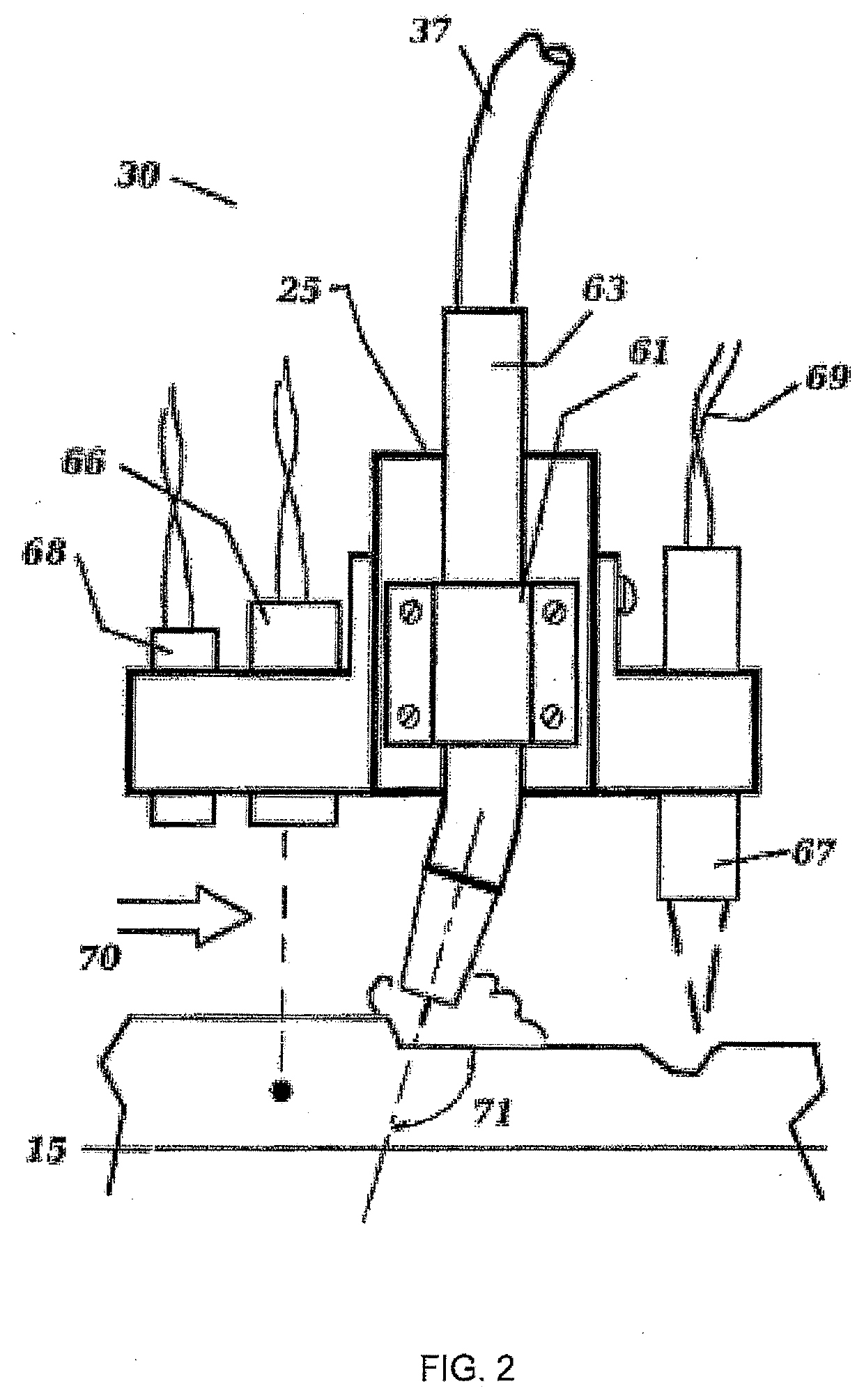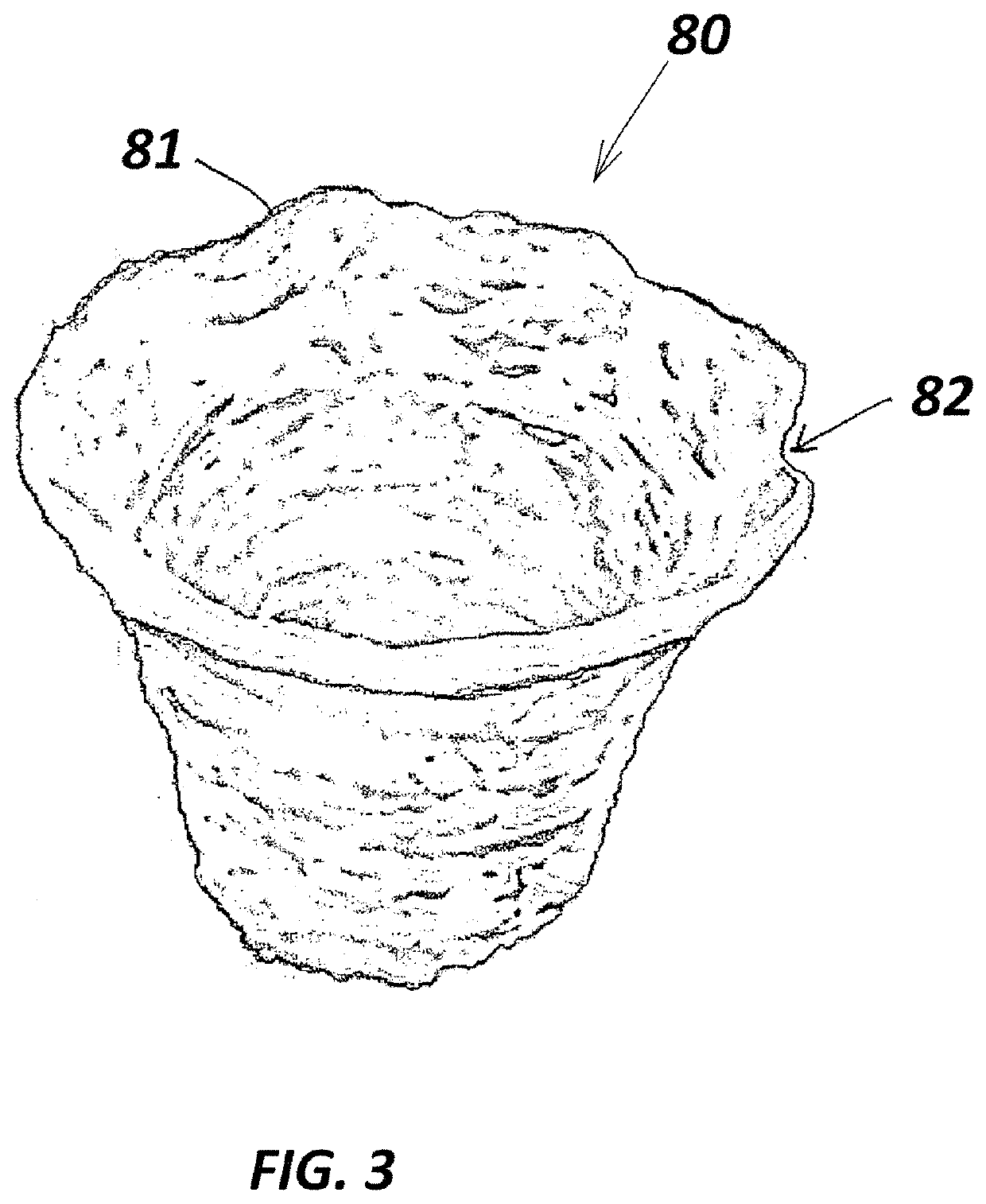Method and apparatus for fabrication of articles by molten and semi-molten deposition
a technology of molten and semi-molten deposition and fabrication method, which is applied in the direction of additive manufacturing, process efficiency improvement, manufacturing tools, etc., can solve the problems of increasing the cost, increasing the cost, and being extremely energy-intensiv
- Summary
- Abstract
- Description
- Claims
- Application Information
AI Technical Summary
Benefits of technology
Problems solved by technology
Method used
Image
Examples
Embodiment Construction
[0054]The present invention is directed to the fabrication of an object using three-dimensional computer models and computer numerical control (CNC) robotics to control the position of the application of a metal or metal-like deposit. The present invention is directed to form a metal-based or metallic two or three dimensional object, as contrasted with known three dimensional plastic printing technologies in use today for providing objects made of plastic. The fabrication of these objects formed of metal does not require the use expensive tooling or molds. Additionally, the present invention is particularly well suited to rapid prototyping and lower volume production of metallic parts.
[0055]The preferred embodiment of the apparatus includes an inert gas arc nozzle fed with wire and gas, a non-stick build surface mounted to a moving table, a multi-axis robotic actuators, a master controller, sensors, a tank full of quenchant, an enclosure, and an air filtering system.
[0056]At least o...
PUM
 Login to View More
Login to View More Abstract
Description
Claims
Application Information
 Login to View More
Login to View More - R&D
- Intellectual Property
- Life Sciences
- Materials
- Tech Scout
- Unparalleled Data Quality
- Higher Quality Content
- 60% Fewer Hallucinations
Browse by: Latest US Patents, China's latest patents, Technical Efficacy Thesaurus, Application Domain, Technology Topic, Popular Technical Reports.
© 2025 PatSnap. All rights reserved.Legal|Privacy policy|Modern Slavery Act Transparency Statement|Sitemap|About US| Contact US: help@patsnap.com



